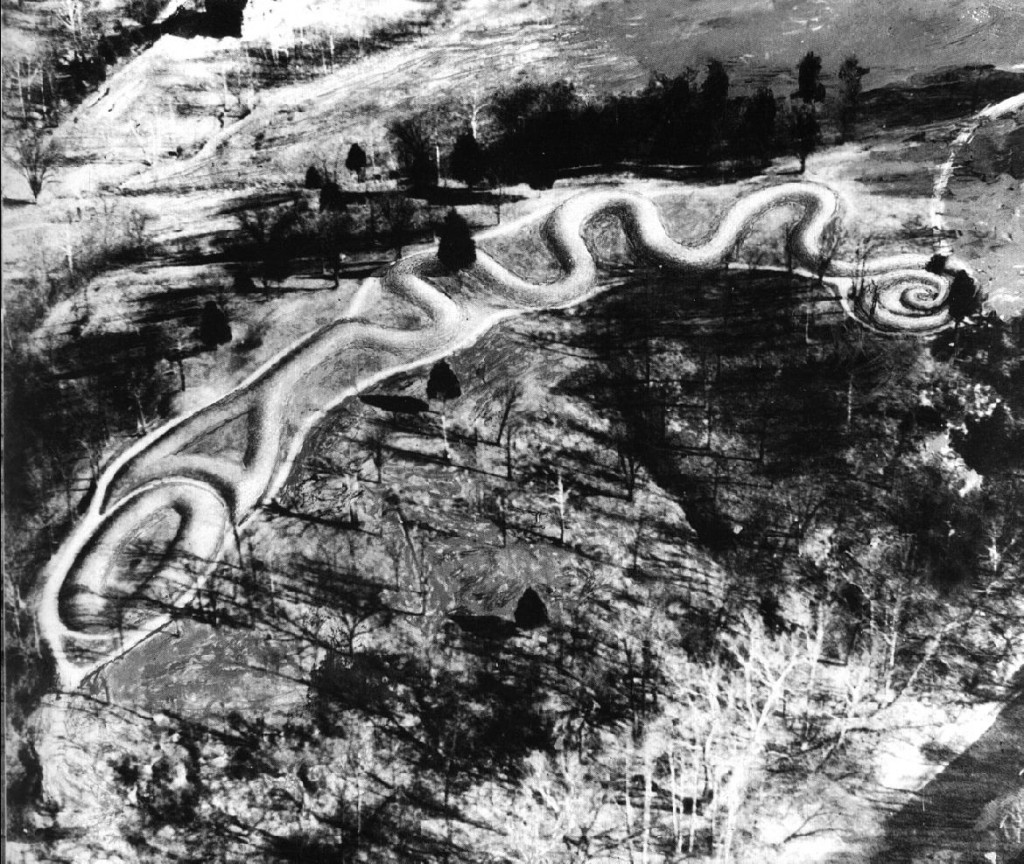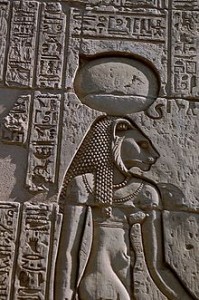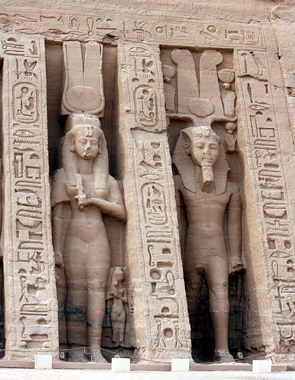Jupiter, Venus, and Velikovsky
 Based on his interpretation of ancient sources, Immanuel Velikovsky argued famously that Venus had emerged from Jupiter as a comet; interacted with the Earth and Mars in the second and first millennia BC, causing the Bronze Age catastrophes; and then finally settled into a nearly circular orbit of the Sun.
Based on his interpretation of ancient sources, Immanuel Velikovsky argued famously that Venus had emerged from Jupiter as a comet; interacted with the Earth and Mars in the second and first millennia BC, causing the Bronze Age catastrophes; and then finally settled into a nearly circular orbit of the Sun.
Three lines of reasoning support a Revised Venus Theory.
First, instead of the various unpersuasive suggestions that Velikovsky and others have made for how a cometary Venus could have emerged from Jupiter, we should consider the possible consequences of the immense gravitational field of Jupiter, which pulls toward it a stream of asteroids and comets, as with Shoemaker-Levy 9 in 1994. A plausible scenario would have an initially dark, cold proto-Venus, pulled by Jupiter’s gravity from the outer solar system shortly before 2525 BC, pass close to Jupiter yet manage to escape its gravitational field. We can assume that extreme tidal forces from Jupiter’s gravitational field created tremendous heating and a great cometary tail visible to observers on Earth.
This would account for the curious stories of the ancient Greeks, that Athena (Venus—eventually Aphrodite replaced Athena in this role) was born from the head of Zeus (Jupiter), and of the ancient Hindus, that Shukra (Venus) emerged from the mouth of Shiva (Guru or Jupiter). According to Greek myth, Zeus turned the pregnant Metis into a fly who zipped into his mouth. She gave birth to Athena inside of him, and then Athena emerged from his head. In effect, a Greek observer spotted proto-Venus when it was approaching Jupiter as tidal friction heated it up to incandescence, and the Greeks called it Metis (this interpretation postdates Velikovsky).
We also now know that Athena was originally A Fena, The Phoenician, referring to the brilliant comet rising in the East.1 So, too, the Roman Venus (evidently originally Fenus, The Phoenician). Velikovsky interpreted the birth of Athena from the head of Zeus myth to mean that Venus had fissioned off of Jupiter itself. His scientific critics considered that erroneous, so his reputation suffered. Opponents ignored his other contributions while dwelling on his mistakes.2
Proto-Venus would have been large and dense enough to maintain its integrity in the gravitational field of Jupiter, though the entire planet would have become molten. This Venus would possess a set of elements different from those of Jupiter itself. This scenario would also resolve the paradox that Venus is old (the proto-Venus) and yet its surface features appear young (from passing Jupiter, transiting the asteroid belt, and interacting with Earth and Mars).
This explanation overcomes the three chief objections—escape velocity, elemental composition, and heat generation—to Velikovsky’s assertion that Venus emerged as a comet from Jupiter. The Jovian origin of Venus has been a leading target of critics of Velikovsky’s theories (it was #1 on astronomer Carl Sagan’s list) as well as a key reason for denying validity to ancient accounts, many in mythical form, as sources of astronomical, climatic, and geological information.3 These objections held particular importance because the whole theory depended on the reported emergence of a comet-like Venus from Jupiter, which seemed not credible to critics.
Now that this emergence can be seen to have a scientifically plausible explanation, the credibility of the ancient observers, who after all were eyewitnesses, must rise accordingly; and therefore their other stories must be examined more carefully as potential sources of information. Many myths are fanciful; some contain important truths. These are easy to grasp once the right interpretation becomes available.
Venus Was Ovoid
Second, although present-day Venus is very spheroidal, its center of mass is displaced from its c enter of figure by 280 meters in a way that appears to have been the result of tidal locking as it passed Jupiter. In ancient times Venus was
enter of figure by 280 meters in a way that appears to have been the result of tidal locking as it passed Jupiter. In ancient times Venus was  depicted as ovoid, e.g., in Ohio’s Great Serpent Mound and in the depiction of Egypt’s Venus goddess Sekhmet.4.
depicted as ovoid, e.g., in Ohio’s Great Serpent Mound and in the depiction of Egypt’s Venus goddess Sekhmet.4.
Tidal locking of a molten Venus to Jupiter’s gravity evidently came close to tearing Venus in two. The anomalous, very slow retrograde rotation of Venus (which, however, is steadily shifting toward prograde) can likewise be powerfully explained as a result of tidal locking to Jupiter, while the atmosphere of Venus continued to rotate at more than 50 times the velocity of the planet’s slowed rotation.
 Third, a new interpretation of iconographic evidence also deserves attention.5 In the photograph from Abu Simbel of 13th-century Pharaoh Ramses II and his consort Nefertari appear what look like the comet Venus and its two-pronged tail in Nefertari’s headdress, and the smaller Mars with its two imperfectly round moons and its own tail, presumably of dust stirred up by an early encounter with Venus or borrowed from Venus’ tail, in the headdress of Ramses II. How could the ancient Egyptians have seen the moons of Mars with the naked eye? How could these headdresses be explained other than as depictions of Venus and Mars during an approach to the Earth already before 1200 BC?
Third, a new interpretation of iconographic evidence also deserves attention.5 In the photograph from Abu Simbel of 13th-century Pharaoh Ramses II and his consort Nefertari appear what look like the comet Venus and its two-pronged tail in Nefertari’s headdress, and the smaller Mars with its two imperfectly round moons and its own tail, presumably of dust stirred up by an early encounter with Venus or borrowed from Venus’ tail, in the headdress of Ramses II. How could the ancient Egyptians have seen the moons of Mars with the naked eye? How could these headdresses be explained other than as depictions of Venus and Mars during an approach to the Earth already before 1200 BC?
In addition to these three points, here are eight new reasons to accept a Revised Venus Theory.
- The Revised Venus Theory’s new explanation that Venus was pulled from the outer solar system by Jupiter’s gravity, heated up from tidal friction, and gained a cometary tail seems far more persuasive than the notion that it fissioned off of Jupiter itself.
- We now have two newly interpreted, powerfully descriptive myths: 1) the Metis (Venus) myth in which, turned into a fly, she flew into Zeus’ mouth and gave birth to Athena, who (in the Athena myth) emerged from his head; and 2) the sequential version of the Chinese Archer Yi myth, which neatly records a ten-day inversion of Earth, even to the point of a comet’s tail turning each day opposite from the changing direction of the Sun because of the solar wind. We can see with Archer Yi that the initial interpretation required knowing that there was a sequential version of the myth, being aware of Venus’ vermilion, double/curved tail (Yi’s bow), and knowing about inversions from Worlds in Collision. So it wasn’t simple. But now that the interpretation is available, any intelligent ten-year old, as well as any scientific critic of Velikovsky, can understand it. And understand the Metis and Athena myths, too. Once they are correctly interpreted, these myths are easy to understand. The wholesale dismissal of ancient myths as sources of scientific insight is clearly indefensible. Many myths are fanciful. Some contain important truths that no reasonable person can ignore.
- There is a simple explanation of the slow retrograde (but swiftly changing to prograde) rotation of Venus, an outstanding anomaly of planetary science: it is the result of tidal locking to Jupiter. This is also a fitting explanation of the superrotation of Venus’ atmosphere.
- Jupiter’s gravitational pull stretched Venus into an ovoid, as depicted in ancient iconography. This in turn opens our eyes to many instances of ancient Venus-related ovals, as in the above image of Egypt’s Venus goddess Sekhmet (obviously, not every oval referred to Venus; we must consider the context).
- Many new instances of iconography, Venus sites, and effigies fill out the framework of the Venus theory; and telling linguistic matches add to the picture. The archaic Greeks called Venus A Fena (eventually Athena–the Phoenician Lady arising in the east) and Bos Eidon (Poseidon–the bull of heaven, as in the Ancient Near East), for example.
- We now have a better date (shortly before 2500 BC) for the first approach of Venus, one that matches evidence from Egypt (the Great Sphinx, Hathor with ovoid Venus in her horns alongside Menkaure) and the great reconstruction of Stonehenge.
- We know the approximate dates of the four inversions of Earth during close approaches of Venus: 2200, 1628 (less certain), 1210, and 820 (least certain; an alternate date is 687 BC, but by this time Venus had been tamed by encounters with Mars that then sent Mars careening toward Earth in 687.). This permits us to interpret much better the epochs and events of the Bronze Age catastrophes. We can also see why the Phoenix (linguistically related to Venus) was reborn roughly every 500 years in myth.
- We now have two new theories that stem from the Venus and Reversing Earth theories. The Outer Solar System Origin of the Terrestrial Planets (OSSO) generalizes the Venus theory, adding much corroborative evidence. OSSO explains the origin of the Pacific Basin as the result of the separation of Mars from Earth by Jupiter’s gravity upon the passage of the combined planet Terramars into the inner solar system. In turn, the Martian Theory of Mass Extinctions (MTME) links tidal destruction caused by planetary approaches with rapid inversion from the Theory of the Reversing Earth to help explain the devastation on Earth as well as the remarkable evidence of disruption on the surface of Mars. These theories provide mutual support and can be considered components of a general tidal theory of the terrestrial planets that outperforms existing ad hoc hypotheses, assumption-bound mathematical modeling, and in situ uniformitarianism. These theories also lend themselves to investigation and testing.
Note that the Revised Venus Theory can refer specifically to the origin of Venus, but in a more general sense it encompasses all the recent changes and additions to the Venus Theory, including those of the Theory of the Reversing Earth.
A Satisfactory Solution
Thus it seems fair to conclude that the Venus/Velikovsky controversy has found a satisfactory solution at last. The Revised Venus Theory argues that: 1) Venus was pulled from the outer solar system by Jupiter’s gravity, turned incandescent by tidal heating, and entered the inner solar system as a comet that passed Earth every 52 years until its orbit circularized; 2) tidal locking with Jupiter explains why Venus was depicted as ovoid, why it has a slow retrograde (but steadily changing to prograde) rotation, and why its atmosphere superrotates; 3) the standard chronology provides a better starting date around 2525 BC than Velikovsky’s foreshortened chronology; and 4) during four close approaches, in approximately 2200, 1628, 1210, and 820 BC, Earth inverted in response to a modest gravitational torque,6 not primarily because of an electromagnetic interaction, as Velikovsky argued (The fourth inversion was caused by an approach of Mars, which had interacted with Venus). In contrast to Velikovsky’s contrarian aversion to Newtonian gravity, the Revised Venus Theory is a tidal theory that accords a central role to gravity.
The Revised Venus Theory also leads to a more general Outer Solar System Theory of the Origin of the Terrestrial Planets and a Martian Theory of Mass Extinctions, neither previously readily accessible to planetary scientists but possessing many points of superiority to current mistaken beliefs. As the three theories are interlocking, evidence for one supports the other two as well, meaning that more evidence and logic now support the Venus theory.
The Revised Venus Theory has the effect of bringing the somewhat blurred image that the pioneer Velikovsky provided us into sharp focus. It puts at our fingertips a range of evidence that had been inaccessible to Velikovsky. The central contention that first Venus, then Mars repeatedly approached Earth seems hard to deny credibly. Of course, many peripheral issues remain open to debate. But the Revised Venus Theory has made critics of the original Venus theory out of date and has undermined their standing. If they wish to regain their credibility, they need to address the Revised Venus Theory rather than studiously avoiding it, as they have thus far done, while continuing to criticize inadequacies in the original version. By the same token, supporters of Velikovsky need to recognize that he made some mistakes and wasn’t aware of what we now know, so they, too, need to come to terms with the Revised Venus Theory. Paradoxically, correcting several mistakes by Velikovsky makes the Venus theory work much better, and thereby redounds to his credit: he was indeed right about Venus approaching Earth.
Arguably the world’s greatest ongoing case of Scientific Rejectionism, the Venus controversy offers important lessons for planetary and Earth science, for ancient history, and for how science can go astray.
*****
Kenneth J. Dillon is a historical and scientific researcher. See the biosketch at About Us. The Velikovsky controversy, the Revised Venus Theory, the Outer Solar System Origin of the Terrestrial Planets, and the Martian Theory of Mass Extinctions figure in his novel of discovery science Rosemarie.

